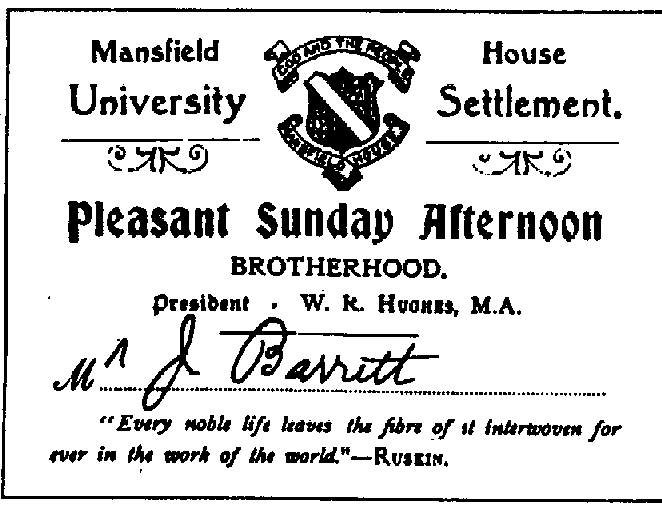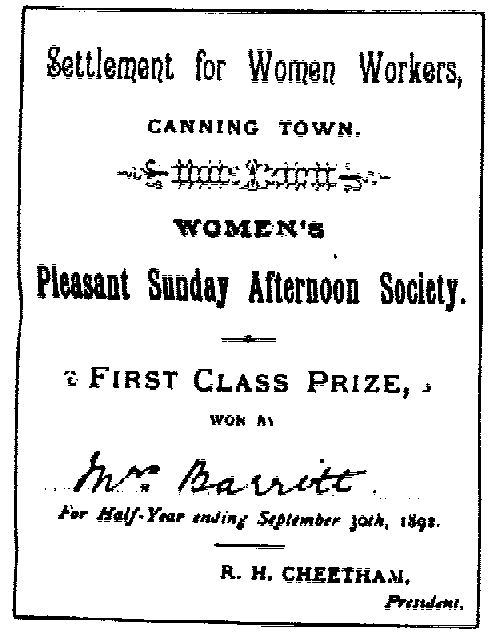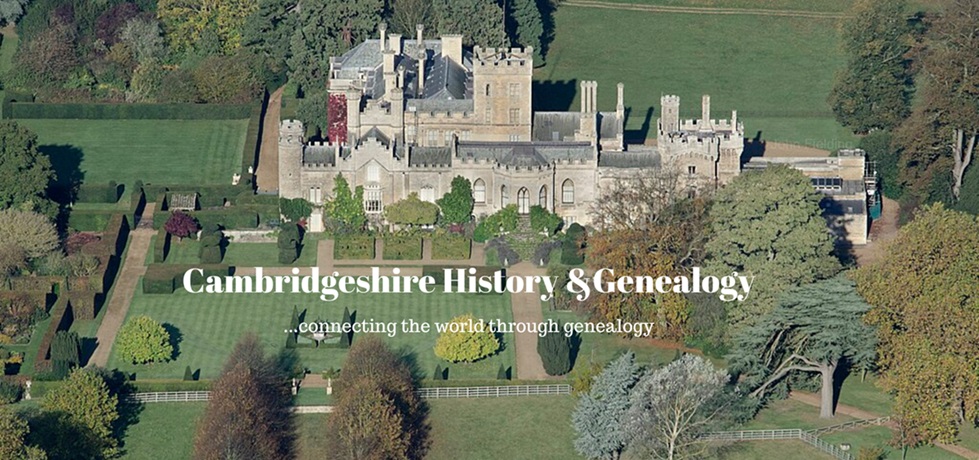The Barritts of the Fenlands - Page 10
John, son of Robert and Sophia Barritt
John was born at 8.40am on 21st January 1853 at Brandon Creek. He was the second son of Robert and Sophia to be given the name John. Their son who was born at Feltwell on 30th July 1851 and who died In infancy also bore this name.
Just prior to John's birth the rivers Great and Little Ouse overflowed their banks and flooded the fen where Robert and Sophia lived. The expectant mother was rowed in a boat by her husband over the flooded Fen to the nearest high and dry ground which was the Ship Inn at Brandon Creek where coach horses were changed on the London to King's Lynn route. There was no room at the Inn but Sophia was accommodated in a room over the stables and it was there that John was born. His birth was registered by his mother at Downham on 12th February 1853.
John was baptised on 17 March 1853 at the recently opened Primitive Methodist Chapel at Brandon Creek, in South Hilgay. John's older brothers and sisters had been baptised in the parish churches of either Southery or Feltwell.

There is at Southery the old National School which is dated 1845 and John claimed that his education was for three days only at this school. As a small boy he worked on the fields scaring crows with a clapper. His mother strapped his dinner to his back and he had to wait for someone to untie the straps before he could eat it.
When he was fifteen, he was given a New Testament, on the inside cover of which he practised writing his name. He kept this all his life and it came to me through my father. I have donated it to the Littleport Society where it should be kept for posterity.
About 1870, when he was aged seventeen, he went to London in search of work and settled In Canning Town near to where his brother Banyard was living. The 1871 Census shows John was aged seventeen, living In the Walmer Castle Public House in Woodstock Street, Canning Town. He Was employed as a pot-boy.
John married Maria Watts Gooding, daughter of Richard Gooding of 78 Woodstock Street, on 15th July 1879 at St. Lukes Parish Church, Victoria Docks. John and Maria lived at 9 Montesquieu Street and at 299 Star Lane, Canning Town where Maria kept a general Store.
| John took great interest in the work done by the Mansfield House University Settlement in Barking Road, Canning Town, an organisation which tried to raise the cultural life of the people living in the rather drab surroundings of Dockland. He was a member of the Pleasant Sunday Afternoon Brotherhood and through that acquired numerous books which were heavily subsidised. The Settlement gave him an outlet for his great sense of humour which so impressed the leaders that they elected him to the Committee where hw was able to combine pleasure with profit. |  |
At this time he was a purveyor of greengrocery and as he used to say, none of his stock ever went rotten as the Settlement bought all his stale vegetables to boil up in a huge copper to make soup which was given free to hungry children. His Royal Highness the Prince of Wales, later King Edward VII, went to Canning Town to open the new Settlement building which included on the top floor a hostel for seamen and other men out of work. John, by virtue of his Committee status was one of those who escorted His Royal Highness around the building. On reaching the top floor, John reached under one of the beds, pulled out a chamber pot and said, "Your Highness, Solomon In all his glory, as stated in the Bible, had chamber pots of pure gold, but the men sleeping here are only too glad to use one of these, if only in enamelware." The Prince turned to John and said, "If your name isn't Jerry then it ought to be!" For the rest of his life John was known as Jerry, a nickname of which he was very proud.
From about 1903, John and his wife lived with his youngest surviving son, John Banyard Barritt, at 93 Ravenscroft Road, Canning Town. John had taught himself to read and write and on 1st March 1925 he and his wife made a joint will leaving all their possessions to their son John Banyard.
John limped, the result of a leg injury, and walked with the aid of an iron shod stick. He always wore a choker scarf and a cloth cap, but in spite of this, and his environment, be voted Conservative.
| He died in Langthorne Hospital on 18th December 1939 and was buried 23rd December in East London Cemetery, private grave No. 26620A. John and Maria had four sons, one daughter and one adopted son. Their youngest sons, twins James Nathaniel and Thomas William who were born in 1886 both died in infancy. |  |
 |
Maria Watts Gooding, wife of John Barritt, was born at Harwich, 30th September 1850, the daughter of Richard Gooding, a butcher. The family moved to 78 Woodstock Street, Canning Town when the butchering business collapsed due to a consignment of cattle, having been purchased, had to be destroyed because of disease. Maria's father then worked as a sugar baker at a sugar factory in Silvertown. Like her husband who was a member of the Mansfield House University Settlement, Maria was a member of the Settlement for Women Workers at Canning Town.
In 1892 she won a book as a First Class Prize in the Pleasant Sunday Afternoon Society. Maria died 30th January 1939 at No. 93 Ravenscroft Road, Canning Town and was the first to be buried In grave No. 26620A, East London Cemetery. |
© Ron Barritt - March 1995
